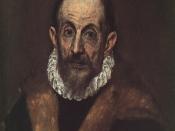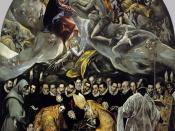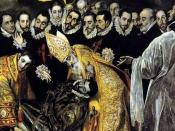During the 14th century, a series of events of the crusades, the Black plague, the great famine and the declining faith in church fueled the beginning of a new social revolution known as the Renaissance Era. The Renaissance marked the departure from the medieval era where the core values were obedience, absolute faith in God, conformity, responsibility, and cooperation. Western Europe experienced a significant change during the Renaissance Era. It was the rebirth of knowledge and culture after the decline and stagnation during the medieval period. There was renewed interest in Greek and Roman culture especially in literature, art and music. There was a growing interest in commerce, invention, exploration, science and technology. It was the "coming-out the dark" time where people knew it was ok to pursue comfort, riches and beauty. Values such as humanism, questioning, doubt, fluctuation of church influence, and individualism came under new light during the rebirth.
Art was one of the aspects that clearly depicted the shift from Middle Ages to the Renaissance period. One famous artist named Demenico Theotocopuli, best known by most people as El Greco, was an influential artist who brought Italian Renaissance Art to Spain. He lived in the latter stages of the Renaissance epoch between 1541-1614 and was known for a lot of great artworks of his era. One famous painting was the "Burial of Count Orgaz" painted in 1586. This painting showed El Greco's liberal stance on both Medieval and Renaissance values. His viewpoint would be best broken down into three aspects: El Greco's connection to society through his own personal life, the subjects of his painting, and techniques in the Burial of Count Orgaz.
Aspects of continuity and change could be seen through El Greco's life and society in which he lived in. El Greco was born in...


